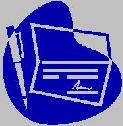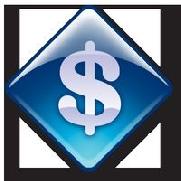Definition of Other sources

Other sources
Amount of funds generated during the period from operations by sources other than
depreciation or deferred taxes. Part of Free cash flow calculation.
Related Terms:
sources of funds internally provided from operations that alter a company's
cash flow position: depreciation, deferred taxes, other sources, and capital expenditures.
Also called margin income, the difference between income and cost. For a depository
institution, the difference between the assets it invests in (loans and securities) and the cost of its funds
(deposits and other sources).
An assessment of ability and willingness to repay a loan from anticipated future cash flow or other sources.
Value of outstanding common shares at par, plus accumulated retained
earnings. Also called shareholders' equity.
In the balance of payments, other capital is a residual category that groups all the capital
transactions that have not been included in direct investment, portfolio investment, and reserves categories. It
is divided into long-term capital and short-term capital and, because of its residual status, can differ from
country to country. Generally speaking, other long-term capital includes most non-negotiable instruments of a
year or more like bank loans and mortgages. other short-term capital includes financial assets of less than a
year such as currency, deposits, and bills.
Value of non-cash assets, including prepaid expenses and accounts receivable, due
within 1 year.
Value of leases, future employee benefits, deferred taxes and other obligations
not requiring interest payments that must be paid over a period of more than 1 year.

A cluster of accounts that are listed after fixed assets on the balance sheet,
and which contain minor assets that cannot be reasonably fit into any of the other
main asset categories.
Cumulative gains or losses reported in shareholders'
equity that arise from changes in the fair value of available-for-sale securities, from the
effects of changes in foreign-currency exchange rates on consolidated foreign-currency financial
statements, certain gains and losses on financial derivatives, and from adjustments for underfunded
pension plans.
The standard used to describe a decline in market value that is not expected to recover. The use of the other-than-temporary description as
opposed to describing a loss as permanent stresses the fact that the burden of proof is on the
investor who believes a decline is only temporary. That investor must have the intent and financial
ability to hold the investment until its market value recovers. In the absence of an ability to
demonstrate that a decline is temporary, the conclusion must be that a decline in value is other
than temporary, in which case the decline in value must be recognized in income.
An equation that reflects the two-sided nature of a
business entity, assets on the one side and the sources of assets on the
other side (assets = liabilities + owners’ equity). The assets of a business
entity are subject to two types of claims that arise from its two basic
sources of capital—liabilities and owners’ equity. The accounting equation
is the foundation for double-entry bookkeeping, which uses a
scheme for recording changes in these basic types of accounts as either
debits or credits such that the total of accounts with debit balances
equals the total of accounts with credit balances. The accounting equation
also serves as the framework for the statement of financial condition,
or balance sheet, which is one of the three fundamental financial
statements reported by a business.
A term often used instead of the more formal and correct
term—statement of financial condition. This financial statement summarizes
the assets, liabilities, and owners’ equity sources of a business at a
given moment in time. It is prepared at the end of each profit period and
whenever else it is needed. It is one of the three primary financial statements
of a business, the other two being the income statement and the
statement of cash flows. The values reported in the balance sheet are the
amounts used to determine book value per share of capital stock. Also,
the book value of an asset is the amount reported in a business’s most
recent balance sheet.
A very broad term rooted in economic theory and referring to
money and other assets that are invested in a business or other venture
for the general purpose of earning a profit, or a return on the investment.
Generally speaking, the sources of capital for a business are
divided between debt and equity. Debt, as you know, is borrowed money
on which interest is paid. Equity is the broad term for the ownership
capital invested in a business and is most often called owners’ equity.
Owners’ equity arises from two quite different sources: (1) money or
other assets invested in the business by its owners and (2) profit earned
by the business that is retained and not distributed to its owners (called
retained earnings).
Refers to investments by a business in long-term
operating assets, including land and buildings, heavy machinery and
equipment, vehicles, tools, and other economic resources used in the
operations of a business. The term capital is used to emphasize that
these are relatively large amounts and that a business has to raise capital
for these expenditures from debt and equity sources.
Terms that refer to the combination of
capital sources that a business has tapped for investing in its assets—in
particular, the mix of its interest-bearing debt and its owners’ equity. In a
more sweeping sense, the terms also include appendages and other features
of the basic debt and equity instruments of a business. Such things
as stock options, stock warrants, and convertible features of preferred
stock and notes payable are included in the more inclusive sense of the
terms, as well as any debt-based and equity-based financial derivatives
issued by the business.
equity
Refers to one of the two basic sources of capital for a business, the
other being debt (borrowed money). Most often, it is called owners’
equity because it refers to the capital used by a business that “belongs”
to the ownership interests in the business. Owners’ equity arises from
two quite distinct sources: capital invested by the owners in the business
and profit (net income) earned by the business that is not distributed to
its owners (called retained earnings). Owners’ equity in our highly developed
and sophisticated economic and legal system can be very complex—
involving stock options, financial derivatives of all kinds, different
classes of stock, convertible debt, and so on.

owners' equity
Refers to the capital invested in a business by its shareowners
plus the profit earned by the business that has not been distributed
to its shareowners, which is called retained earnings. Owners’
equity is one of the two basic sources of capital for a business, the other
being borrowed money, or debt. The book value, or value reported in a
balance sheet for owners’ equity, is not the market value of the business.
Rather, the balance sheet value reflects the historical amounts of capital
invested in the business by the owners over the years plus the accumulation
of yearly profits that were not paid out to owners.
property, plant, and equipment
This label is generally used in financial
reports to describe the long-term assets of a business, which include
land, buildings, machinery, equipment, tools, vehicles, computers, furniture
and fixtures, and other tangible long-lived resources that are not
held for sale but are used in the operations of a business. The less formal
name for these assets is fixed assets, which see.
Dividend
As the term dividend relates to a corporation's earnings, a dividend is an amount paid per share from a corporation's after tax profits. Depending on the type of share, it may or may not have the right to earn any dividends and corporations may reduce or even suspend dividend payments if they are not doing well. Some dividends are paid in the form of additional shares of the corporation. Dividends paid by Canadian corporations qualify for the dividend tax credit and are taxed at lower rates than other income.
As the term dividend relates to a life insurance policy, it means that if that policy is "participating", the policy owner is entitled to participate in an equitable distribution of the surplus earnings of the insurance company which issued the policy. Surpluses arise primarily from three sources:
1) the difference between anticipated and actual operating expenses,
2) the difference between anticipated and actual claims experience, and
3) interest earned on investments over and above the rate required to maintain policy reserves. Having regard to the source of the surplus, the "dividend" so paid can be considered, in part at least, as a refund of part of the premium paid by the policy owner.
Life insurance policy owners of participating policies usually have four and sometimes five dividend options from which to choose:
1) take the dividend in cash,
2) apply the dividend to reduce current premiums,
3) leave the dividends on deposit with the insurance company to accumulate at interest like a savings plan,
4) use the dividends to purchase paid-up whole life insurance to mature at the same time as the original policy,
5) use the dividends to purchase one year term insurance equal to the guaranteed cash value at the end of the policy year, with any portion of the dividend not required for this purpose being applied under one of the other dividend options.
NOTE: It is suggested here that if you have a participating whole life policy and at the time of purchase received a "dividend projection" of incredible future savings, ask for a current projection. Life insurance company's surpluses are not what they used to be.
Mortgage Insurance
Commonly sold in the form of reducing term life insurance by lending institutions, this is life insurance with a death benefit reducing to zero over a specific period of time, usually 20 to 25 years. In most instances, the cost of coverage remains level, while the death benefit continues to decline. Re-stated, the cost of this kind of insurance is actually increasing since less death benefit is paid as the outstanding mortgage balance decreases while the cost remains the same. Lending institutions are the most popular sources for this kind of coverage because it is usually sold during the purchase of a new mortgage. The untrained institution mortgage sales person often gives the impression that this is the only place mortgage insurance can be purchased but it is more efficiently purchased at a lower cost and with more flexibility, directly from traditional life insurance companies. No matter where it is purchased, the reducing term insurance death benefit reduces over a set period of years. Most consumers are up-sizing their residences, not down-sizing, so it is likely that more coverage is required as years pass, rather than less coverage.
The cost of mortgage lender's insurance group coverage is based on a blended non-smoker/smoker rate, not having any advantage to either male or female. Mortgage lender's group insurance certificate specifies that it [the lender] is the sole beneficiary entitled to receive the death benefit. Mortgage lender's group insurance is not portable and is not guaranteed. Generally speaking, your coverage is void if you do not occupy the house for a period of time, rent the home, fall into arrears on the mortgage, and there are a few others which vary by institution. If, for example, you sell your home and buy another, your current mortgage insurance coverage ends and you will have to qualify for new coverage when you purchase your next home. Maybe you won't be able to qualify. Not being guaranteed means that it is possible for the lending institution's group insurance carrier to cancel all policy holder's coverages if they are experiencing too many death benefit claims.
Mortgage insurance purchased from a life insurance company, is priced, based on gender, smoking status, health and lifestyle of the purchaser. Once obtained, it is a unilateral contract in your favour, which cannot be cancelled by the insurance company unless you say so or unless you stop paying for it. It pays upon the death of the life insured to any "named beneficiary" you choose, tax free. If, instead of reducing term life insurance, you have purchased enough level or increasing life insurance coverage based on your projection of future need, you can buy as many new homes in the future as you want and you won't have to worry about coverage you might loose by renewing or increasing your mortgage.
It is worth mentioning mortgage creditor protection insurance since it is many times mistakenly referred to simply as mortgage insurance. If a home buyer has a limited amount of down payment towards a substantial home purchase price, he/she may qualify for a high ratio mortgage on a home purchase if a lump sum fee is paid for mortgage creditor protection insurance. The only Canadian mortgage lenders currently known to offer this option through the distribution system of banks and trust companies, are General Electric Capital [GE Capital] and Central Mortgage and Housing Corporation [CMHC]. The lump sum fee is mandatory when the mortgage is more than 75% of the value of the property being purchased. The lump sum fee is usually added onto the mortgage. It's important to realize that the only beneficiary of this type of coverage is the morgage lender, which is the bank or trust company through which the buyer arranged their mortgage. If the buyer for some reason defaults on this kind of high ratio mortgage and the value of the property has dropped since being purchased, the mortgage creditor protection insurance makes certain that the bank or trust company gets paid. However, this is not the end of the story, because whatever the difference is, between the disposition value of the property and whatever sum of unpaid mortgage money is outstanding to either GE Capital or CMHC will be the subject of collection procedures against the defaulting home buyer. Therefore, one should conclude that this kind of insurance offers protection only to the bank or trust company and absolutely no protection to the home buyer.
Related to : financial, finance, business, accounting, payroll, inventory, investment, money, inventory control, stock trading, financial advisor, tax advisor, credit.



